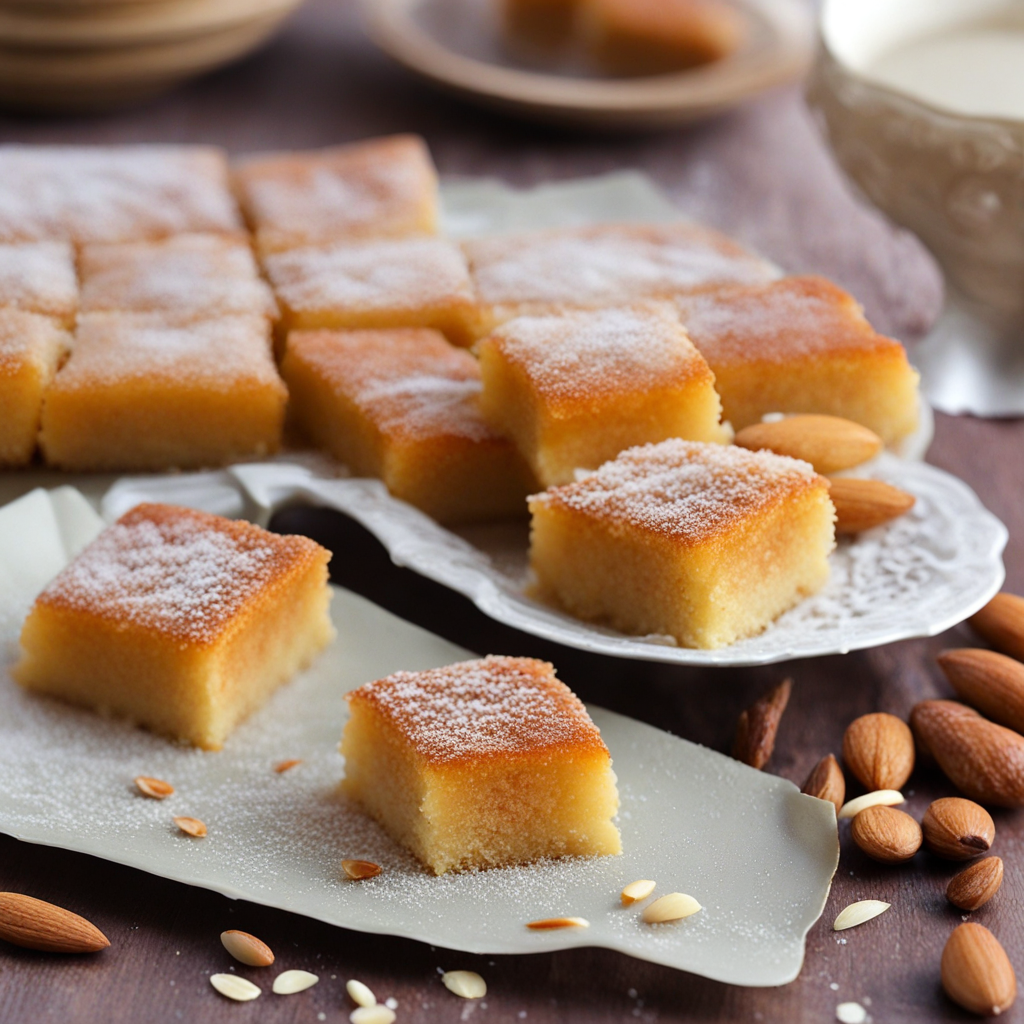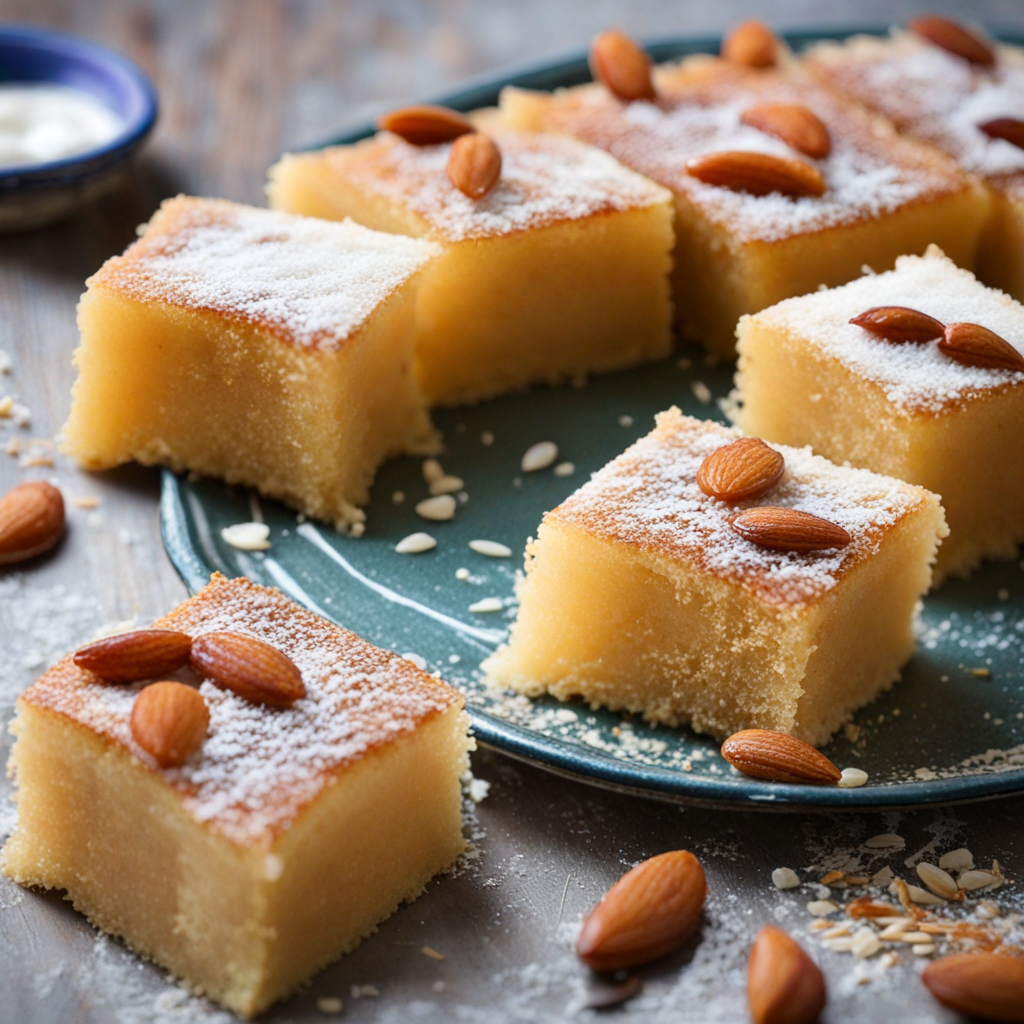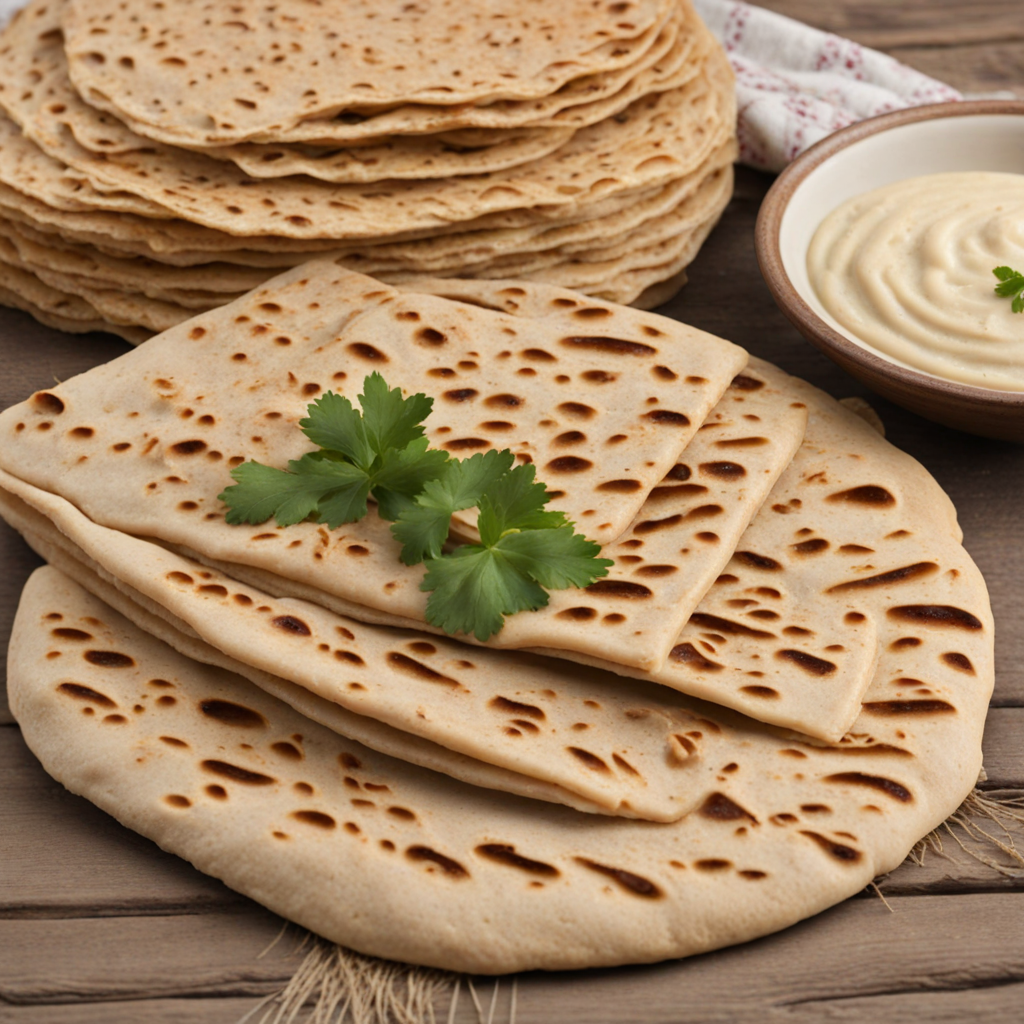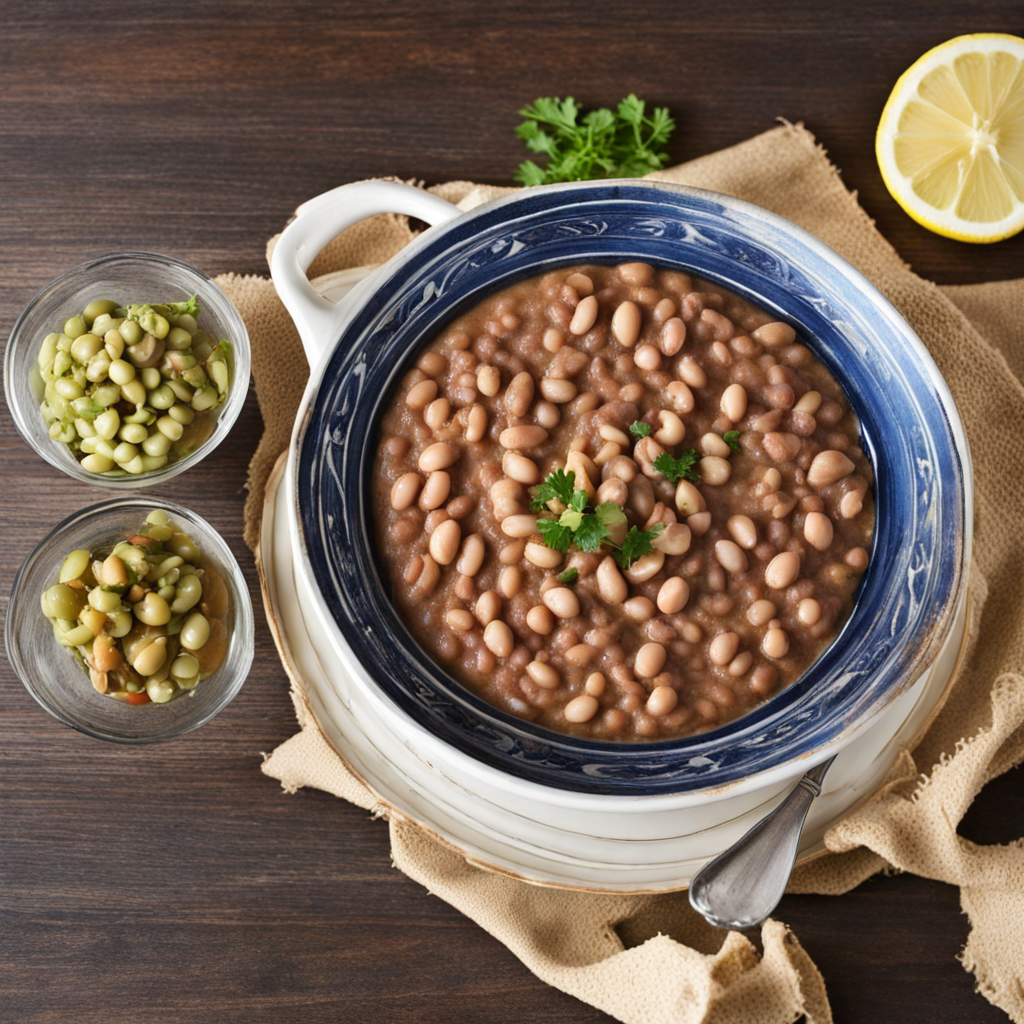Basbousa
Basbousa, a beloved Egyptian dessert, is a sweet, semolina-based cake that delights the senses with its rich flavors and unique texture. Made primarily from fine semolina, sugar, yogurt, and a hint of baking powder, this cake is soaked in a fragrant sugar syrup after baking, creating a moist and luscious treat. The semolina gives Basbousa a slightly grainy yet tender crumb, making each bite a satisfying experience. Often garnished with blanched almonds or coconut flakes, it not only tastes divine but also looks inviting on any dessert table. One of the standout features of Basbousa is its syrup, typically infused with rosewater or orange blossom, which adds an aromatic touch and elevates the sweetness to a whole new level. When the syrup is poured over the warm cake, it seeps into the semolina, creating a perfect balance of moisture and flavor. This combination of textures and tastes—sweet, floral, and slightly tangy—makes Basbousa a unique experience for those looking to explore traditional Middle Eastern desserts. Basbousa is often enjoyed during special occasions, holidays, or simply as a delightful treat after a meal. Its ease of preparation and the ability to make it in large batches make it a popular choice for gatherings and celebrations. Whether you're indulging in a piece with a cup of tea or sharing it with friends and family, Basbousa promises to be a memorable culinary discovery, inviting you to savor the essence of Egyptian culture and its rich culinary heritage.
How It Became This Dish
The Sweet Legacy of Basbousa: A Journey Through Time Basbousa, a delightful semolina cake soaked in syrup, is one of the most beloved desserts in Egypt and the Middle East. With its golden, slightly crispy top and moist, syrup-soaked interior, it is a staple at celebrations, family gatherings, and everyday meals alike. The history of basbousa is as rich and varied as its flavor, reflecting a tapestry of cultural influences, regional variations, and culinary innovations over centuries. #### Origins: A Sweet Beginning The origins of basbousa are somewhat elusive, with its history entwined in the culinary traditions of the Middle East. While many believe that basbousa hails from Egypt, its roots can also be traced to various regions across the Arab world, including Turkey, where a similar dessert known as "Revani" is popular. The name "basbousa" itself is believed to derive from the Arabic verb "basa," which means "to moisten" or "to soak," aptly describing the cake's preparation method. The earliest references to similar desserts can be found in ancient Arabic cookbooks, which highlight the use of semolina, a coarse flour made from durum wheat, as the primary ingredient. This grain has been cultivated in the Mediterranean region for thousands of years, and its durability and nutritional value made it a staple for many civilizations, including the Egyptians, Greeks, and Romans. #### Cultural Significance: A Symbol of Hospitality Basbousa holds a significant place in Egyptian culture, serving not only as a dessert but also as a symbol of hospitality and generosity. In a society where the act of sharing food is deeply ingrained in social customs, basbousa is often prepared for guests during festive occasions and family gatherings. Its sweet taste and inviting aroma create a warm atmosphere, making it an ideal dish to celebrate life's milestones, from weddings and religious holidays to birthdays and graduations. Moreover, basbousa is more than just a treat; it represents a connection to heritage and tradition. Families often have their own cherished recipes passed down through generations, each with unique variations and personal touches. Some may add different flavors such as coconut, almonds, or rose water, while others may incorporate yogurt or milk to enhance the cake's texture and taste. This adaptability has allowed basbousa to evolve over time while maintaining its core identity as a beloved dessert. #### Development Over Time: A Culinary Evolution As Egypt experienced various historical shifts, including the Arab conquest, Ottoman rule, and British colonialism, the culinary landscape transformed, and basbousa evolved alongside these changes. The introduction of sugar and new cooking techniques during the Ottoman era significantly influenced how desserts were prepared, leading to the popularization of syrup-soaked cakes like basbousa. In the 19th century, as Egypt opened up to European influences, culinary practices became more eclectic. Basbousa began to gain prominence beyond the local context, appearing in cafes and bakeries catering to both locals and tourists. This period marked the beginning of basbousa's rise as a national dessert, solidifying its place in Egyptian cuisine. The 20th century saw further globalization, with Egyptian expatriates introducing basbousa to various parts of the world. Today, this sweet treat can be found in Middle Eastern restaurants and bakeries around the globe, from Europe to North America and beyond. The rise of social media and food blogs has also played a crucial role in popularizing basbousa internationally, making it accessible to a wider audience eager to recreate this cultural gem in their own kitchens. #### Modern Interpretations: A Contemporary Delight In recent years, basbousa has undergone a renaissance, with chefs and home cooks experimenting with flavors and presentations. Contemporary twists on the classic recipe include incorporating exotic ingredients like saffron, pistachios, and even chocolate. These innovations reflect a broader trend in culinary arts where traditional dishes are reimagined to suit modern palates while still honoring their historical roots. The emergence of gluten-free and health-conscious diets has also influenced the preparation of basbousa. Some recipes now substitute traditional semolina with almond flour or coconut flour, allowing those with dietary restrictions to enjoy this beloved dessert. Additionally, less sugar and healthier fats like coconut oil have become popular alternatives, catering to the growing demand for nutritious yet indulgent options. #### Basbousa in the Global Culinary Scene As the world becomes more interconnected, food has emerged as a powerful medium for cultural exchange. Basbousa stands as a testament to this phenomenon, bridging gaps between diverse communities and fostering appreciation for Middle Eastern cuisine. Food festivals, cooking classes, and cultural events often feature basbousa, promoting its unique flavor profile and story. In the culinary world, basbousa is celebrated not only for its taste but also for its versatility. It can be served as a dessert, snack, or even breakfast, often accompanied by a cup of tea or coffee. Its ability to adapt to various occasions and preferences makes it a cherished dish that resonates with both tradition and modernity. #### Conclusion: A Timeless Classic The history of basbousa is a reflection of Egypt's rich culinary heritage, showcasing the intricate interplay of tradition, innovation, and cultural significance. From its ancient origins to its contemporary interpretations, basbousa continues to capture hearts and palates around the world. As we savor a piece of this delectable cake, we partake in a legacy that spans centuries—a sweet reminder of the connections we share through food. Whether enjoyed at a family gathering in Cairo or a Middle Eastern restaurant in New York, basbousa embodies the spirit of hospitality and the joy of sharing, making it a timeless classic that will surely endure for generations to come.
You may like
Discover local flavors from Egypt







